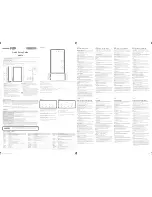
Lucent Technologies 12IR125 Series II Batteries
Issue 7 December 1999
Operation 7 - 5
Capacity
The capacity of a battery or a string is expressed as a percent of
its rated value. For example, if a battery is discharged at the
5-hour rate and it lasts 5.25 hours before reaching 10.5 volts, it
is said to have 105% of its rated capacity.
Temperature
Correction for
Capacity
The capacity of a battery varies slightly with temperature. For
every 2°F (1°C) increase in temperature, there is a corresponding
approximate 0.3% increase in capacity. To correct the percent
capacity to 77°F (25°C), add or subtract the correction factor
determined from Figure 7-1. Use the temperatures recorded at
the beginning of the discharge.
Example: The battery temperature at start of discharge was 66°F
(18.9°C) and the discharge to 10.5 volts at the 8-hour rate (480
minutes) lasted 470 minutes. The uncorrected capacity is 98%,
i.e/, (470/480) x 100 = 98%. From Figure 7-1, the correction
factor equals a positive 2% correction at 66°F (18.9°C).
Therefore, the temperature-corrected capacity is 98% + 2% =
100% (full capacity).
Caution
Lucent Technologies strongly recommends a temperature
compensation device in high-temperature environments.
Failure to use such a device may result in high battery
temperature that can cause premature battery failure and
reduce or void the warranty.
Note
When the battery temperature is above 77°F (25°C),
subtract the correction factor and vice versa.
















































